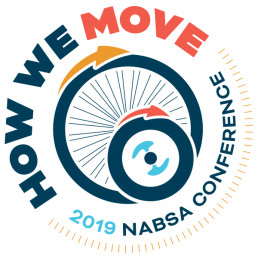
Meet the Keynote: A Q&A with Stephanie Gidigbi
This fall, bikeshare and shared micromobility leaders from around the globe will gather in Indianapolis for the 2019 NABSA Annual Conference. How We Move: Micromobility, Macro Impact, will be the first annual conference since NABSA extended its mission to include all shared micromobility devices. Attendees will represent all sectors of the bikeshare and shared micromobility industry, including representatives from for-profit, nonprofit, and government organizations.
NABSA is happy to be joined by Keynote Speaker Stephanie Gidigbi. Stephanie has worked with leaders at every level of government to champion public policy solutions that promote economic justice, social equity, and environmental benefits for communities. She previously served as a political appointee to the U.S. Department of Transportation (USDOT) in the Obama administration and advanced several innovative initiatives including the USDOT Smart City Challenge equity components focused on smart land use, partnership, citizen involvement, user-focused mobility services and choices.
Stephanie spoke with NABSA about her background and thoughts on bikeshare and shared micromobility.
Q: You have a background working with communities at different levels of government. What are your recommendations for building successful partnerships?
The foundation of a successful partnership begins with a two-way value proposition and shared commitment that respects the unique expertise of all parties involved. It offers mutual support and the promotion of each other’s priorities beyond the shared goals. It fosters trust and creates the environment for adaptive leadership, flexible to change, transparent in decision making, open to data-sharing, and accountable to outcomes. The best partnerships take time and invest the social capital upfront before seeking an economic return on investment; moreover, they are transformational versus transactional.
Q: How do you think conversations have changed around transportation infrastructure over the last several years?
The conversation has shifted from moving cars to moving people. In most communities across the country, transportation infrastructure reflects the history of our past. Roads that were built for cars, displacing people and the cultural fabric of many communities. Over the last decade the population growth, density of urban spaces, rise of technology, and impact of climate change has impacted how we move, how we innovate, and how we adapt.
The integration of mobility on demand options is helping to bridge the gap and address last mile connections, improve paratransit services, better congestion management. Our cities and roads have gotten smarter with the rise of new technology. Innovation within the industry and business world has impacted the travel choices and real time options for the end user.
It’s a dramatic shift for our car-oriented culture—highways versus transit comparison, yet there still remains a need for deeper conversations on equity, access, affordability, sustainability and safety for all users that goes beyond complete streets and micromanagement of sidewalks.
Q: You have also worked extensively on the environment, resiliency, and climate change. How do you see bikeshare and shared micromobility fitting into these efforts?
The industry has an opportunity to help disrupt the impact of climate change by moving Americans towards a net zero-emission future. The transportation sector has become the largest contributor to U.S. greenhouse gas (GHG) emissions. The integration of shared micromobility into active transit options and public transit zero emission fleets has become one of the most energy and carbon-efficient modes of travel when replacing a car trip, and its rapid growth provides an opportunity to reduce emissions faster.
However, mobility companies and local government officials have an opportunity to improve the sustainability options of e-scooters and bikes by updates their policies and addressing the hidden GHG impact found in the production manufacturing, shipping process, and (re)distribution practice. Companies should consider developing alternative approaches to collect and distribute e-scooters to reduce the adverse environmental impacts; such as reducing the average driving distance for collection and distribution, limiting scooters collection to those with a low battery state of charge, and the use of fuel-efficient vehicles for collection and redistribution.
The smartest, most efficient, and resilient option builds upon the assets of a community, reduces inequities, and provides an integrated experience for the user that goes beyond mode-specific preferences. When industry and government work together to improve the quality of life for residents, we all benefit.

